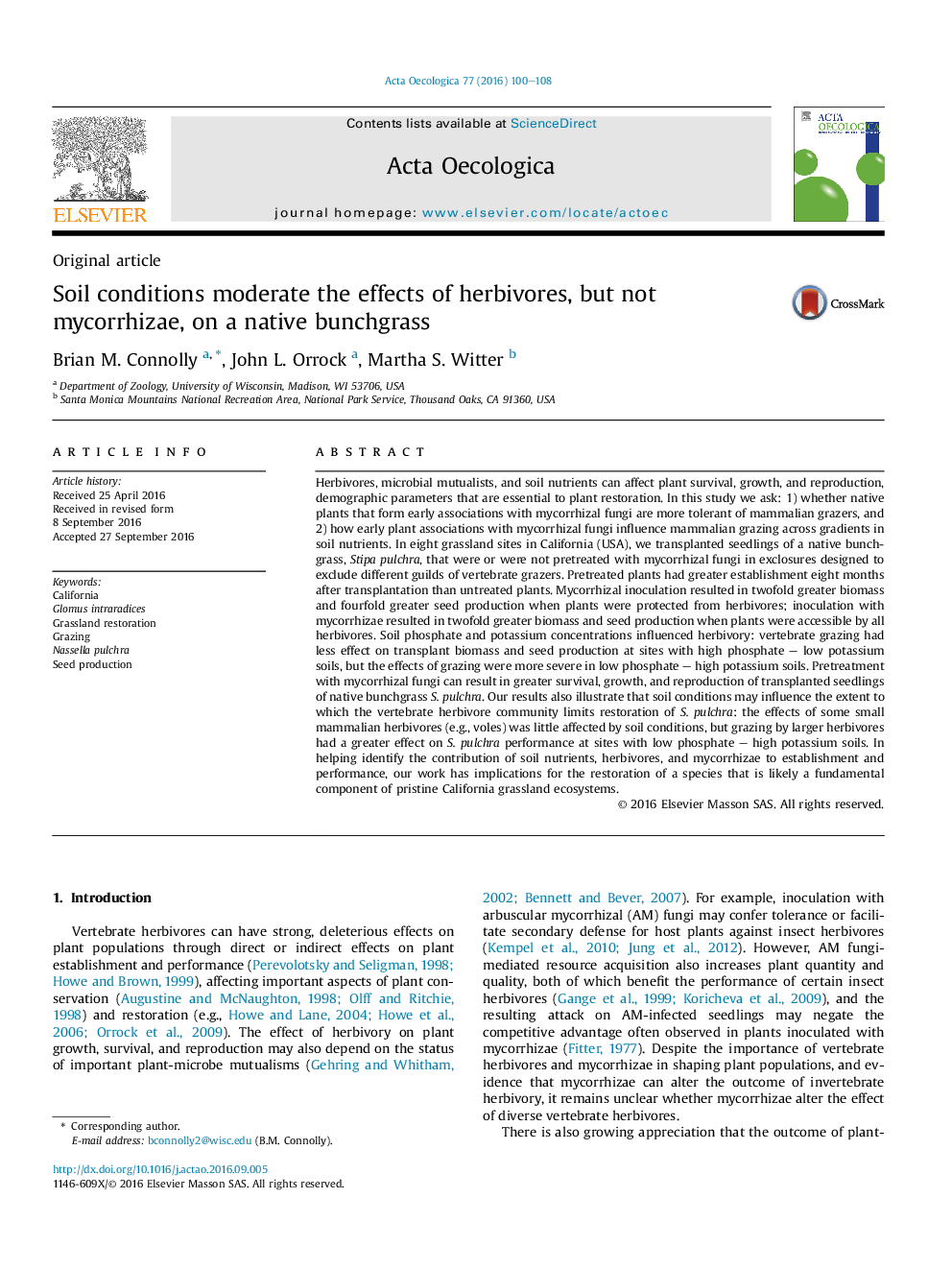| Article ID | Journal | Published Year | Pages | File Type |
|---|---|---|---|---|
| 4380602 | Acta Oecologica | 2016 | 9 Pages |
•Mutualists, herbivores, and soil conditions can affect grassland restoration.•Mycorrhizae increased Stipa pulchra transplant establishment and performance.•Soil conditions altered mammalian herbivory on S. pulchra transplants.•Effects of grazing on S.pulchra transplants differed by herbivore identity.
Herbivores, microbial mutualists, and soil nutrients can affect plant survival, growth, and reproduction, demographic parameters that are essential to plant restoration. In this study we ask: 1) whether native plants that form early associations with mycorrhizal fungi are more tolerant of mammalian grazers, and 2) how early plant associations with mycorrhizal fungi influence mammalian grazing across gradients in soil nutrients. In eight grassland sites in California (USA), we transplanted seedlings of a native bunchgrass, Stipa pulchra, that were or were not pretreated with mycorrhizal fungi in exclosures designed to exclude different guilds of vertebrate grazers. Pretreated plants had greater establishment eight months after transplantation than untreated plants. Mycorrhizal inoculation resulted in twofold greater biomass and fourfold greater seed production when plants were protected from herbivores; inoculation with mycorrhizae resulted in twofold greater biomass and seed production when plants were accessible by all herbivores. Soil phosphate and potassium concentrations influenced herbivory: vertebrate grazing had less effect on transplant biomass and seed production at sites with high phosphate – low potassium soils, but the effects of grazing were more severe in low phosphate – high potassium soils. Pretreatment with mycorrhizal fungi can result in greater survival, growth, and reproduction of transplanted seedlings of native bunchgrass S. pulchra. Our results also illustrate that soil conditions may influence the extent to which the vertebrate herbivore community limits restoration of S. pulchra: the effects of some small mammalian herbivores (e.g., voles) was little affected by soil conditions, but grazing by larger herbivores had a greater effect on S. pulchra performance at sites with low phosphate – high potassium soils. In helping identify the contribution of soil nutrients, herbivores, and mycorrhizae to establishment and performance, our work has implications for the restoration of a species that is likely a fundamental component of pristine California grassland ecosystems.
